Introduction
Suboxone is a widely used medication for the treatment of opioid addiction. It combines two active ingredients, buprenorphine and naloxone, to help individuals overcome their dependence on opioids. In this comprehensive guide, we will explore what Suboxone is, how it works, and what its benefits are, and we will address common misconceptions surrounding its use. Whether you are considering Suboxone treatment for yourself or a loved one, this article will provide you with the information you need to make an informed decision.
Understanding Suboxone
What is Suboxone?
Suboxone is a medication approved by the FDA for the treatment of opioid addiction. It is classified as a medication for opioid use disorder (MOUD) and has been shown to significantly reduce the risk of fatal overdoses by approximately 50%. Suboxone is a combination of two medications: buprenorphine and naloxone.
How Does Suboxone Work?
Suboxone works by binding to the same receptors in the brain as other opioids, such as heroin, morphine, and oxycodone. However, it acts as a partial agonist, producing a milder effect than full agonists. Buprenorphine, the primary ingredient in Suboxone, helps to reduce withdrawal symptoms and cravings for opioids. Naloxone, the secondary ingredient, acts as an antagonist and blocks the effects of opioids, preventing misuse and overdose.
Benefits of Suboxone
Suboxone offers several benefits for individuals seeking recovery from opioid addiction. Here are some key advantages of using Suboxone:
- Withdrawal Symptom Management: Suboxone alleviates the severity of withdrawal symptoms, making the detoxification process more manageable.
- Craving Reduction: By binding to opioid receptors, Suboxone helps to reduce cravings for opioids, making it easier to resist relapse.
- Harm Reduction: Suboxone’s partial agonist properties minimize the risk of overdose compared to full agonists like heroin or oxycodone.
- Long-Term Treatment: Suboxone can be used as a long-term maintenance medication, providing ongoing support in addiction recovery.
- Accessibility: Suboxone is available through certified healthcare providers and can be obtained online through platforms like RecoveryDelivered.com.
Addressing Misconceptions
Myth #1: Suboxone is not true recovery.
There is a common misconception that individuals on Suboxone are not truly in recovery. However, the understanding of recovery has evolved over time, recognizing that addiction is a chronic condition that requires medical intervention. Suboxone, when used as part of a comprehensive treatment plan, helps individuals regain stability, reduce harm, and improve their overall quality of life.
Myth #2: Suboxone is frequently misused.
While any medication can be misused, Suboxone has a lower potential for misuse compared to full agonist opioids. Its partial agonist properties limit the euphoric effects and discourage misuse. In fact, Suboxone is often used as a tool to manage withdrawal symptoms and support individuals in tapering off other opioids.
Myth #3: Overdosing on Suboxone is as easy as with other opioids.
Contrary to popular belief, it is tough to overdose on Suboxone alone. The presence of naloxone, which blocks the effects of opioids, reduces the risk of respiratory depression and overdose. Overdoses associated with Suboxone typically occur when it is combined with other substances, such as benzodiazepines or alcohol.
Myth #4: Suboxone should only be taken for a short period of time.
The duration of Suboxone treatment varies depending on individual needs. While some individuals may require short-term use to manage withdrawal symptoms, others may benefit from long-term maintenance therapy. The decision should be made in consultation with a healthcare provider, taking into consideration the individual’s progress, goals, and overall well-being.
Myth #5: Suboxone treatment does not require therapy.
While Suboxone can be effective as a standalone treatment, combining it with therapy and other support services enhances the chances of long-term recovery. Therapy helps individuals address the underlying causes of addiction, develop coping strategies, and gain the necessary skills to maintain sobriety. A comprehensive treatment approach that includes both medication and therapy is often recommended for optimal outcomes.
Conclusion
Suboxone is a valuable medication for individuals seeking recovery from opioid addiction. Its unique combination of buprenorphine and naloxone offers numerous benefits, including symptom management, craving reduction, and harm reduction. Addressing misconceptions surrounding Suboxone is crucial to promoting understanding and access to effective treatment options. If you or someone you know is struggling with opioid addiction, consult a healthcare professional to determine if Suboxone is a suitable option for your recovery journey. Recovery is possible, and with the right support, you can take the first steps towards a healthier and brighter future.
Note: This article is for informational purposes only and should not replace professional medical advice. Please consult a qualified healthcare provider for personalized guidance and treatment options.


